The Levine Museum of the New South
Over the course of the Southern journey taken by the WPAMC Class of 2016, we visited many historic houses and museums. One which stood out to me was the Levine Museum of the New South, located in Charlotte, North Carolina.
Exterior of the Levine Museum of the New South (James Willamor, Creative Commons 3.0)
The Levine Museum of the New South began as a “museum without walls” found throughout the city of Charlotte in 1992. It eventually found a permanent home in its current location, which opened in 2001.
Rosemary secures our tickets at the Museum’s front desk
The mission of the Levine Museum of the New South, as stated on their website, is to “engage a broad-based audience in the exploration and appreciation of the diverse history of the South since the Civil War, with a focus on Charlotte and the surrounding Carolina Piedmont.” The Museum works to achieve this mission through many fronts, including their exhibits, public programs, and their online presence.
Our visit to the Levine Museum of the New South was only a few hours long, as necessitated by our busy schedule. Yet, in this short amount of time, the Museum was still able to make a big impression. I spent most of my visit in the flagship exhibit of the institution, Cotton Fields to Skyscrapers: Reinventing Charlotte and the Carolina Piedmont in the New South.
The exhibit traces the development of the “New South” after the end of the Civil War to the present day, focusing on the city of Charlotte and its environs as a way to address larger changes occurring throughout the South during this period. Though this is a vast range of time and space to cover in one exhibit, Cotton Fields to Skyscrapers draws upon a range of images, objects, and interactives to engage visitors of all ages. Although the exhibit opened over ten years ago, it appears to have been revised and modified several times to incorporate new technology and current events.
Cotton Fields to Skyscrapers progresses chronologically and thematically, beginning just after the conclusion of the Civil War with an examination of the burgeoning cotton industry and the tense new relationships between white Southerners and newly freed slaves. Pictured below, the author handles one of the interactive elements of the exhibit, feeling the difference between picked cotton and ginned cotton.

Throughout the exhibit, exhibit panels with Post-its allowed visitors to give their own responses to questions which asked them to reflect upon and synthesize the content they had just seen. In the panel below, visitors are asked, “How would life be different if you’d grown up on a cotton farm?”
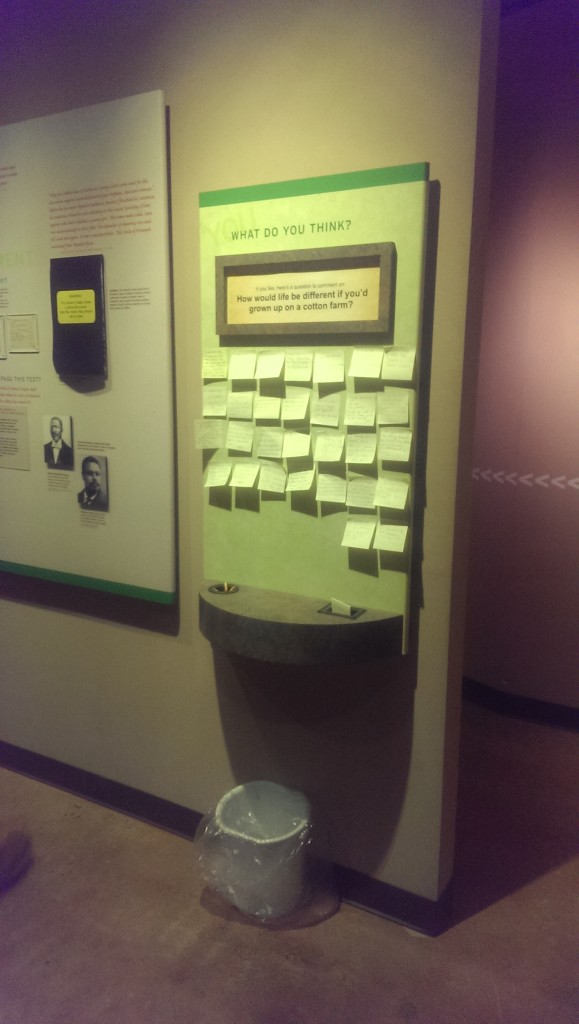
Following the presentation of information about cotton production, the exhibit began to address the increasing industrialization of South, and the emergence of textile factories that made cotton products after the conclusion of the Civil War. Pictured below, visitors can try their hand at simple weaving techniques to help them better understand the work of these factories.

Below, one of my classmates has picked up another of the interactive elements found throughout the exhibit. Several stations with telephones allowed visitors to listen to speeches, songs, and interviews related to the content presented in Cotton Fields to Skyscrapers.

A WPAMC Fellow answers the call of history!
One of the elements which stood out to me was a series of small circles found throughout the exhibit. Found next to wall-sized photographs, one such circle is pictured below. While photographs or images of this size are frequently used in exhibits as background or decoration, these circles activate the photographs by asking visitors to find certain elements of each photograph. The circle pictured below corresponded with a photograph of a Southern cotton mill and asks visitors to spot, among other things, “the railroad that brought raw cotton and took away yarn,” and “the mill village.” This simple technique brings a large portion of otherwise decorative wall space to life.

Outside a display about electric appliances and the shift towards electrical power in the new South, a set of cubes allows children and adult visitors to match up pictures and stories to create an understanding of how individuals purchased things at the Southern Power store.

Several full size, walk in displays are found throughout the exhibit, including a one room tenant farmer’s house, a mill house porch, Good Samaritan’s Hospital Chapel, a Southern Power store, a Belk Department store, a lunch counter, a school bus, and a mid-twentieth century living room. Below, two WPAMC students explore the displays found in a barber shop.
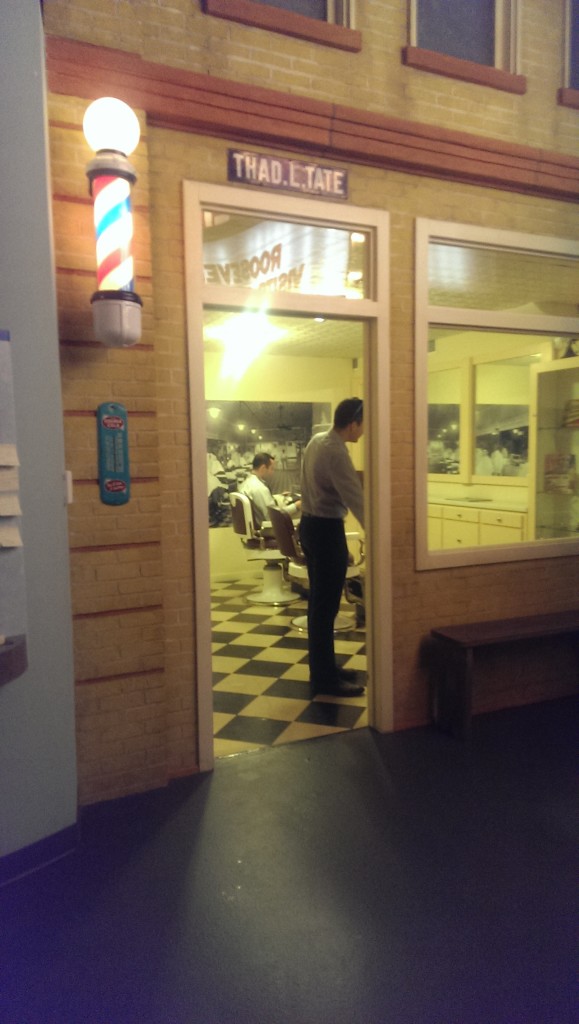
Here, trip leaders Rosemary Krill and Stéphanie Auffret sit in a replica living room. The display includes a television with several pre-programmed options which visitors may choose to watch, many of which relate to the work of Civil Rights leaders in Charlotte and throughout the Unites States.

Cotton Fields to Skyscrapers progresses through the twentieth century, exploring the great social, cultural, and economic changes that continue to affect Charlotte and other areas of the South. Many of the displays near the end of the exhibit reflect the diverse identities of those who have made Charleston their home. In the activity pictured below, visitors reflect on differing understandings of personal space in various cultures.
Many of the displays that explore recent episodes of history. The panel pictured below features an image taken from a Facebook page, as well as a video screen that displays various viewpoints about a controversial land development issue that occurred in the Charlotte area in 2006. Visitors cast a vote reflecting their own viewpoint, and then are able to watch a short video message from someone with an opposing view. This display not only lets visitors make their own voices hear, but also exposes them to the complicated range of opinions that go into such decisions.
The final displays of the exhibit make much use of technology, as visitors can record their own video reactions to what they have seen. The display pictured below, in the final room of the exhibit, allows visitors to take a picture of themselves in front of a background of one of the historic settings they explored earlier in the exhibit. This activity, appropriately titled “Picture Yourself in History,” provides visitors with a free memento of their trip to the Levine Museum of the New South.
The focus of this post has been on the many interactive elements found throughout Cotton Fields to Skyscrapers, but there are many other noteworthy parts of this exhibit as well. Cotton Fields to Skyscrapers brings together a remarkable range of objects and images. The one which I was most excited to discover, the Lance Roasted Peanut Cart, is pictured below. While I have been a lifelong fan of the products of the Lance Corporation, particularly their Toast-Chee cracker sandwiches, I never knew about their origins in the Charlotte area.
Our visit to the Levine Museum of the New South and its flagship exhibit Cotton Fields to Skyscrapers: Reinventing Charlotte and the Carolina Piedmont in the New South exposed it to a range of innovative interpretive techniques. The Museum gave us much helpful information which allowed us to better understand the region through which we were traveling, and was a great complement to other sites and museums we visited that addressed earlier periods in the history of the South.
By Rosalie Hooper, WPAMC class of 2016

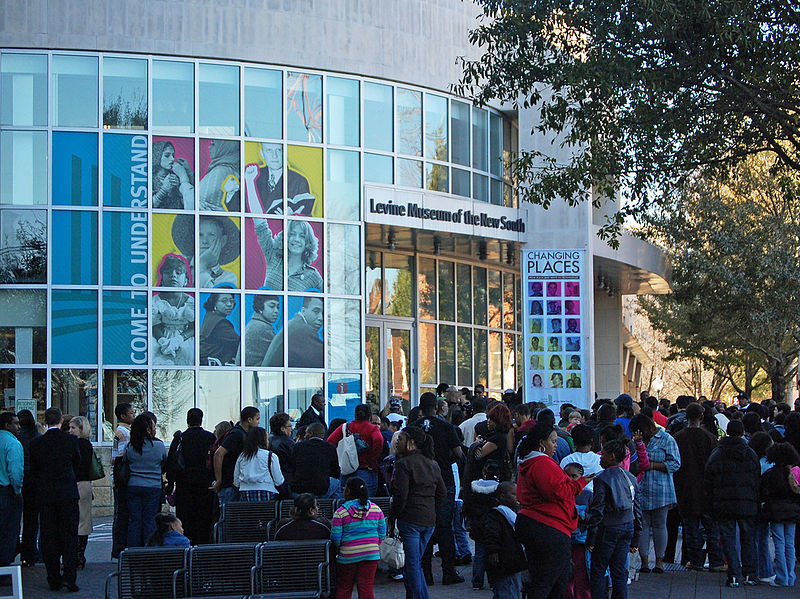
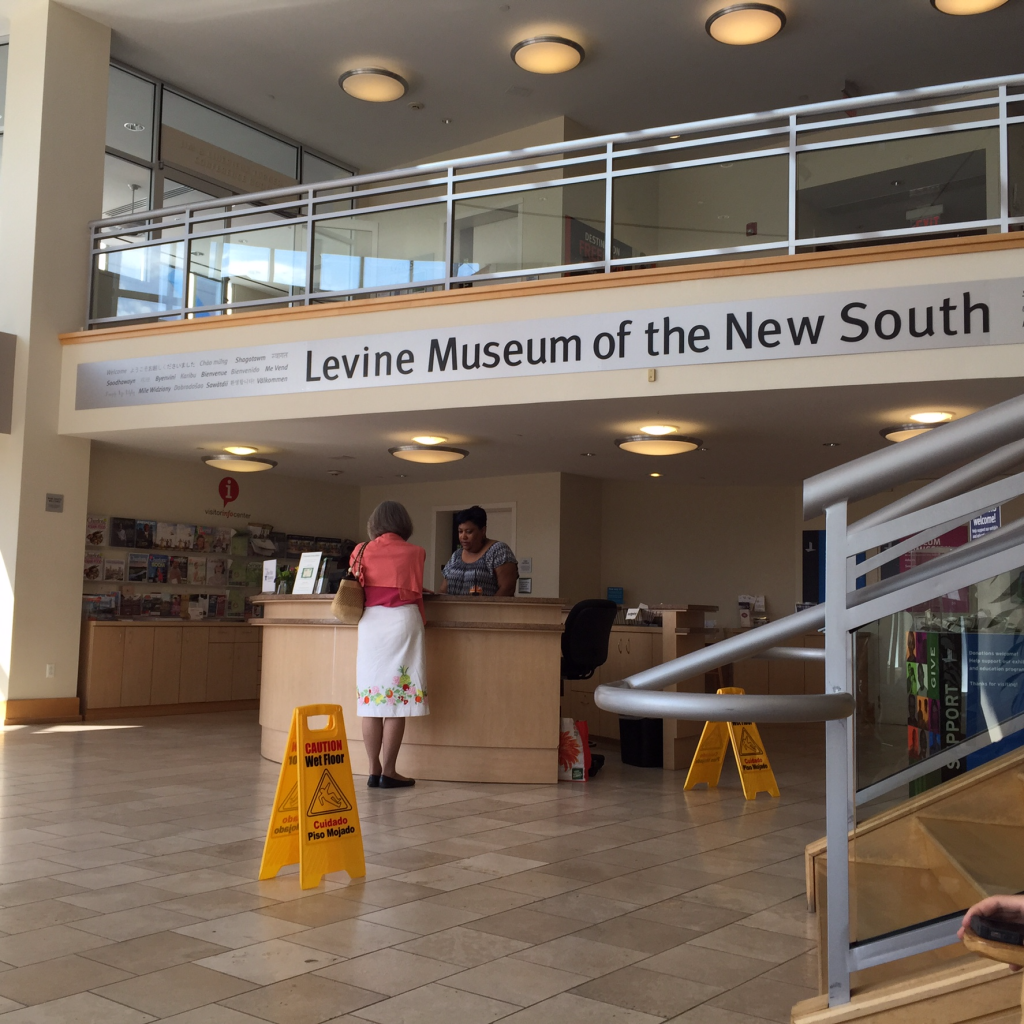

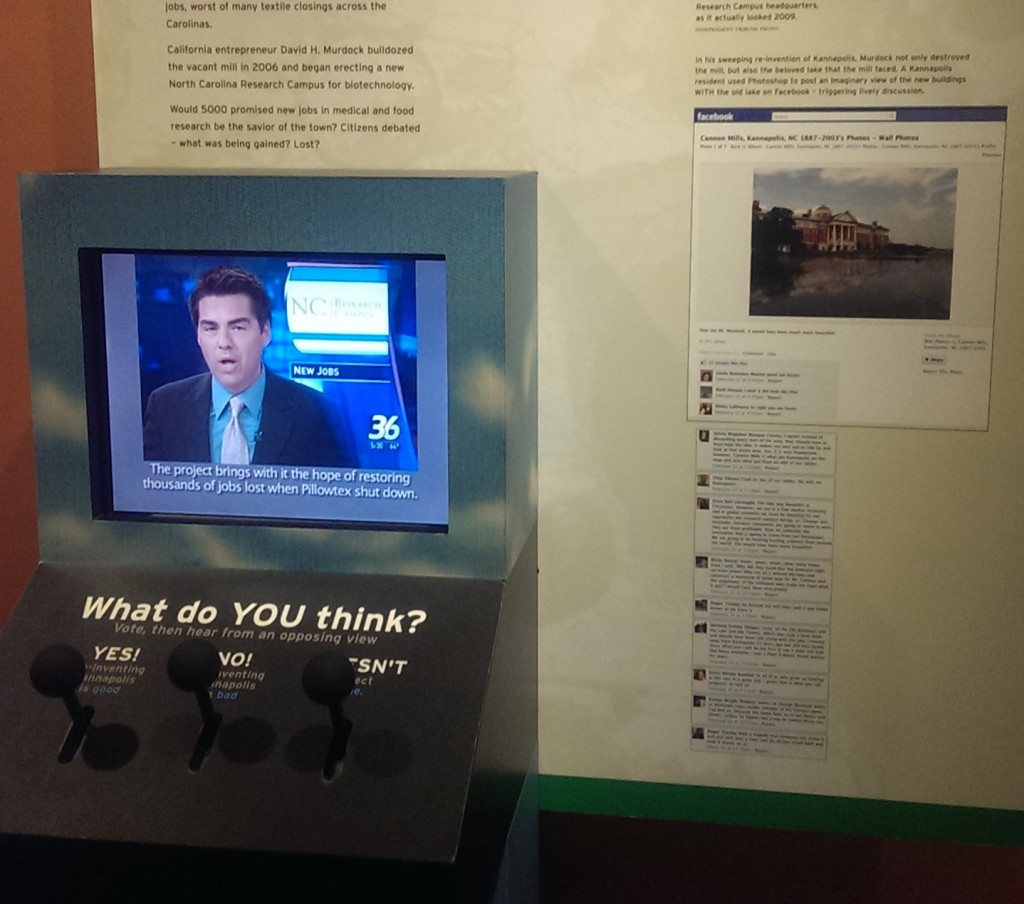


Leave a Reply